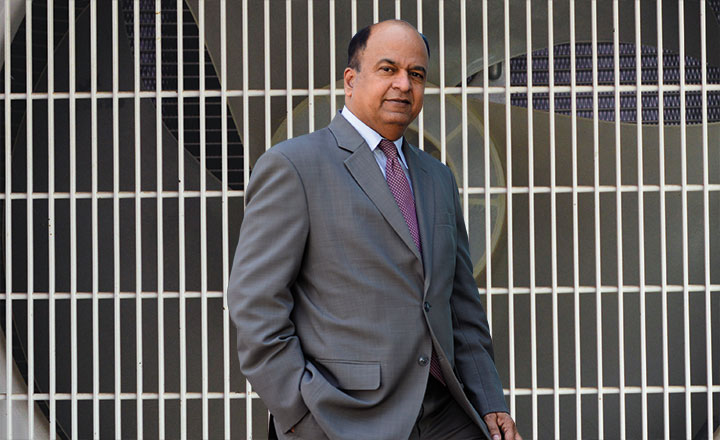Voltas is a jewel in Tata’s crown,” bragged President and COO, Pradeep Bakshi in a presentation ahead of the company’s All-star air conditioners launch in Delhi reently. Bakshi also reminded the audience that the cooling brand sits pretty alongside the grand old empire’s other brands such as Titan and Jaguar Land Rover.
But go back 5-7 years and Voltas, though publicly known as an air conditioner brand, was more an engineering solutions company, moving from one project to the other, judging by its order book and topline. Now, though, the financial picture is drastically different. “Voltas’ business model has seen a sea-change over the last five years as share of Unitary Cooling Product (UCP) segment (which includes air conditioning) to sales and EBIT increased from 25% and 23% in FY10 to 49% and 72%, respectively, in FY15,” says Sandeep Tulsiyan, senior research analyst at JM Financial. With cooling contributing almost half the topline and three-fourth of the bottomline now, Voltas can truly be called an air-conditioning company.
“We are the market leader with 26% share in the primary market,” says Bakshi. Analysts too peg Voltas’ share upwards of 20%. The marketplace is crowded though, with 20 brands, including formidable MNC brands. South Korean firm LG is the second largest player, with a market share of around 18%. The likes of Samsung, Hitachi and Daikin have market share under 10% (in the range of 6-7%) despite investing heavily in marketing over the years.
Bakshi says Voltas is attuned to the Indian consumers needs. “We have been present here for six decades and understand the Indian consumer better than others.” But the brand, despite its long legacy, lost ground to MNCs by mid-2000s before staging a comeback. Voltas’ marketing head, Deba Ghoshal says there have been two phases in the brand’s life. The first, between 2006 and 2011, when they started the brand building exercise. “Before that we were neither visible in the market nor in the consumer’s mind.” The second phase, from 2006-07 onwards, saw the brand focusing on star-rating and energy efficiency. “Voltas focused on a simple customer promise — energy efficiency. We were the first to start it, later on it became the industry benchmark. The power ministry and Bureau of Energy Efficiency were both indecisive. So, we thought about creating a differentiation even though the product was costlier by Rs.3,000.”

The differentiation strategy, no doubt, worked for Voltas but there were other factors too. Bakshi credits a leaner and flexible business model and reach. “Things that were not our core competency, we outsourced. For example, our supply chain has been outsourced to another Tata company. Also, five years back, we had 5,000 touchpoints. Today, we have 12,000,” he adds. Yellapu Santosh of Angel Broking adds two more factors — strong post-sale support (inclusive 5-year warranty on the compressor) and advertising focus (Voltas is among the top five media spenders amongst AC players).
In 2011, after having gained back lost ground, Voltas began asking what next? “After having leveraged that position for almost four years, we were asking what more could an AC offer,” says Ghoshal. So, in 2012, Voltas changed its brand positioning. It brought out all-weather air conditioners and made that its focus. These ACs could also heat and dehumidify besides cooling, but the strategy didn’t flow to the topline like its earlier energy-efficiency peg. The average Indian consumer was still buying ACs for cooling.

Ghoshal though defends the positioning. “Positioning has to be distinct, meaningful even if it is to a limited number of customers. For us, it was clutter breaking. Maybe the flagship’s contribution to the category was not 50%. Any flagship is supposed to instrument consumer perception and the imagery of the brand. It is not supposed to only drive sales,” he says.
Cut back to the present and Voltas is going back to its old horse — energy efficiency, but a little smartly. Both Bakshi and Ghoshal claim that the industry (mostly MNCs) has wasted millions in the past five years to push inverter technology but surveys still show — cooling, brand and star rating as three key drivers for the AC category. The inverter technology remains at the bottom, even after endless advertising. “Perhaps it has not been communicated properly,” says Ghoshal.

Voltas’ strategy thus is to sugarcoat the inverter technology. In its new commercial for All-star ACs, the brand shows a family running only one AC and watching television together. However, things soon get embarrassing for the Gupta and Sharma families in the TVCs. It ends with a simple solution — to run two ACs at the cost of one to escape awkward moments.
“After investing millions into the percentage game, boasting that I am 50% better, 60% better, the consumer still doesn’t understand what the inverter is. So our whole idea was to demystify how the inverter works. Basically, it is not a start-stop compressor, it is a steady cool compressor,” says Ghoshal. The constant revision in strategy is because the competition is stiff in the AC market. LG, post its leadership change last year, has reportedly become very aggressive and has been offering more incentives. “UCP segment saw increased competitive intensity as higher inventory with competitors led to price cuts, steep discounts and dealer incentives. Though near term margins are likely to face competitive pressure, structural growth drivers like increasing AC penetration, expansion in new product categories (coolers) remain intact,” says Tulsiyan of JM Financial commenting on Q3, FY16 results.
On LG, Bakshi says, “When were they not aggressive? We have handled that aggression positively and have been able to compete with them on all fronts.” But in this segment, where the throne is always up for grabs, the old trick has to work again for Voltas to remain at the top.











